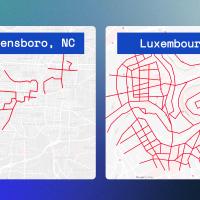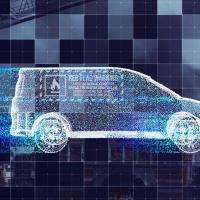In 1868, the first manually operated, gas-lit traffic light was installed in London. Less than a month after its implementation, the stoplight exploded, injuring the policeman who operated it. The city immediately abandoned all plans to install more of the lights.
The reliability of traffic signals has come a long way since the mid-19th century, but until recently, the devices haven’t kept pace with advances in artificial intelligence. Now, smart traffic lights are beginning to make transportation more efficient, sustainable, and safe than ever before.
The Evolution of Traffic Lights
Traffic lights have been long overdue for a technological revolution. The first automated traffic light controllers were invented about 100 years ago with a turning dial on the inside that changed lights on and off, based on a predetermined sequence. For its time, this automation was a huge leap — it alleviated the need for police officers to manually direct traffic.
How do traffic lights work today? Most traffic signals in modern cities are digital, however, the technology behind their automation hasn’t changed much. Ninety-nine percent of these digitized lights are merely mimicking the same dial-based mechanisms and running on fixed schedules.
If you’ve ever found yourself stuck at a traffic light when no one else is around, you’re not alone. The average American spends an extra 58 hours per year waiting at traffic lights, but wasted time is only the tip of the iceberg.
Today’s intersections are some of the most dangerous parts of our cities, home to 40% of all car accidents. They’re also an emissions nightmare — every year in the U.S., idling cars release 30 million tons of CO2 into the atmosphere.
With traffic congestion increasing year after year, it’s clear that new solutions are needed to optimize intersections. These are all reasons a company called NoTraffic has set out to bring stoplights into the 21st century, ensuring that intersections benefit both people and the planet.
Reimagining Stoplights
Artificial intelligence has improved many aspects of our daily lives, but traffic management systems haven’t kept up — until now.
NoTraffic was founded by three Israeli entrepreneurs on a mission to bridge the gap between road safety and innovation. Tal Kreisler, the company’s CEO, saw great potential in replacing outdated, dial-based traffic lights.
“Today, intersections are being managed by primitive devices that have no idea what’s going on,” he said. “Now, imagine if we let these devices think and talk. We’ve developed an AI-based platform that allows us to transform any intersection around the world in less than two hours.”
NoTraffic’s smart stoplights are able to react to what’s happening on the street in real-time, instead of relying on stagnant timers. The devices are part of an autonomous system that works to manage entire traffic grids in the most efficient way possible. The system is comprised of three main parts.
The first component is intelligent sensors that collect rich data from intersections. These sensors use powerful cameras to identify and track different travel modes such as cars, bikes, buses, and pedestrians. The information gathered is combined with data from connected vehicles to give the most comprehensive view of city streets.
The sensors communicate with a computing device that serves as the brains behind the operation. At any given second, the computer’s algorithm is processing information provided by sensors across intersections and determining which signals will maintain the best traffic flow.
Finally, a management center in the cloud functions as the connective layer that evaluates all intersections in a given area as one coherent grid, which allows data to be shared across other nearby intersections.
The platform has been introduced in California, Ohio, and Arizona, and early applications already show promise. In Phoenix, the fifth-largest city in the U.S., NoTraffic cut drivers’ wait time by 54% and pedestrian wait time by 22%. It also demonstrated the ability to change lights depending on the approach of emergency vehicles, buses, and pedestrians.
The results from the August 2020 experiment were impressive, but Kreisler says that momentous change will come from applying the platform on a larger scale.
“If we do an extrapolation for the entire county, we’re getting to really impressive numbers,” he says. “We can save more than half a million tons of CO2 per year. We can generate more than a billion dollars in economic benefit, and we can save more than 90,000 months of delay time.”
NoTraffic is now in use at intersections in over 40 cities across the U.S. The company’s work is a testament to how smart infrastructure can improve lives and make the future of transportation a more sustainable one.


